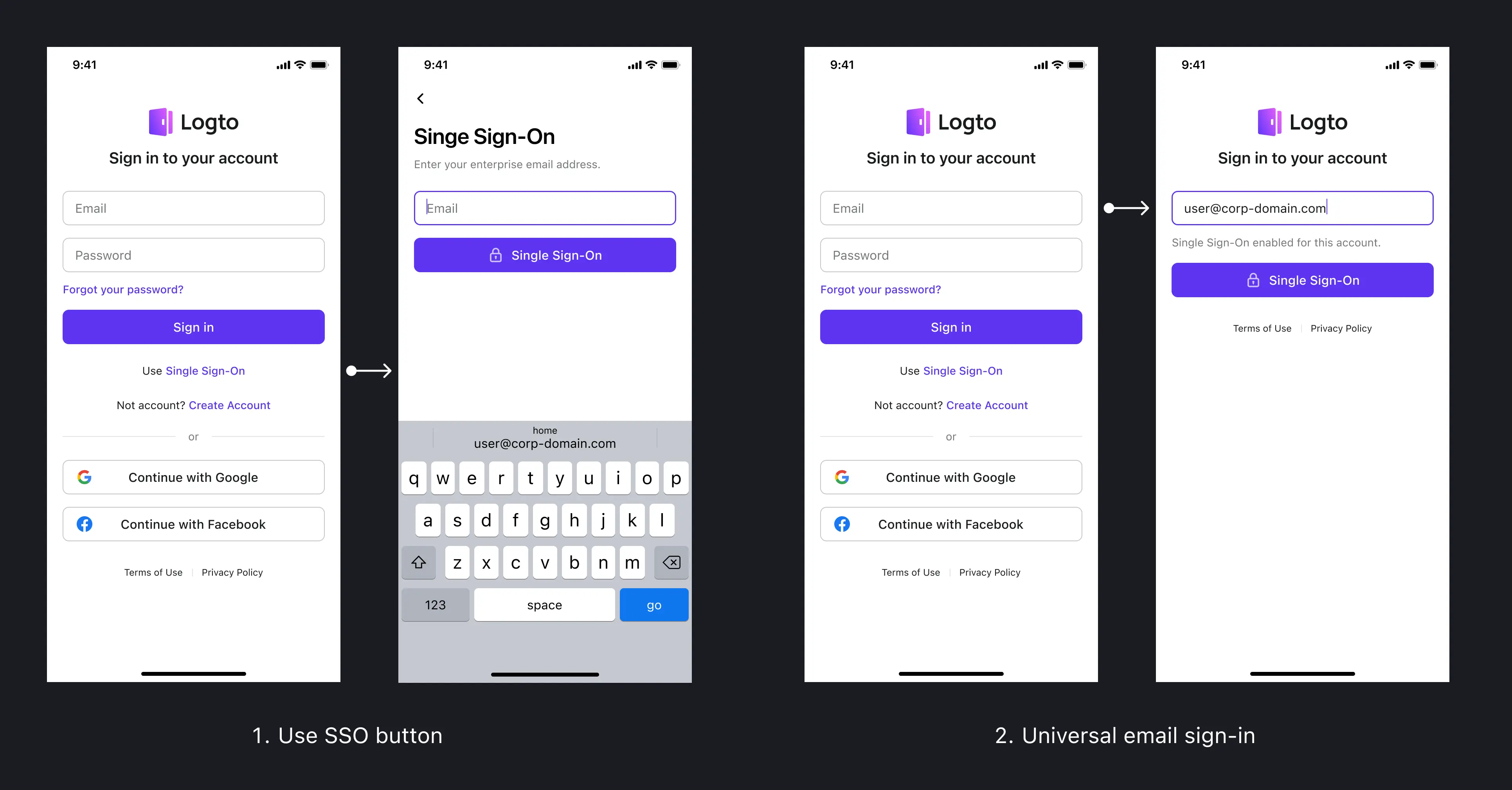End-user SSO experience
Logto offers an integrated Single Sign-On (SSO) experience, seamlessly aligning with your existing sign-in configurations.
Initiating SSO
SSO is activated when users attempt to sign in using an enterprise email domain configured for SSO. This process bypasses standard verification methods like passwords.
Methods to Trigger SSO:
- SSO button: On the sign-in or sign-up page, users can click “Use Single Sign-On”. They are then prompted to enter their enterprise email. Email domain detection redirects users to their enterprise identity provider.
- Universal email sign-in: If a user enters an enterprise email with an SSO-enabled email domain during a standard sign-in process, the “Sign in” button automatically changes to “Single Sign-On”. This premise is that the Email sign-in method is enabled in your service.

Redirecting to the identity provider
When users use Single Sign-On, where they go next depends on how your enterprise email domains are set up in Logto:
- Single connector: If a user's email domain is linked to only one enterprise connector, they'll go straight to the identity provider connected to that connector. There's no need for them to choose anything.
- Multiple connectors: If a user's email domain is linked to more than one connector, they get to pick which identity provider they want to use from the options available to them.
First-time SSO use
Logto syncs primary email addresses from the identity provider, accommodating both new and existing users:
- For new users: If someone is signing in for the first time using their work email address, Logto automatically sets up a new account for them. This means they don't have to go through the usual account creation process.
- For existing users: If the work email address used for SSO is already connected to an account in Logto, the system will recognize this and link the SSO sign-in to the existing account. This way, there's no need to create a new account or user ID - everything stays under the existing account.
Note: the situation could be different when SAML attribute mapping is not correctly configured or user email is not provided by the identity provider.
Multi-Factor Authentication (MFA) and SSO
By default, MFA is bypassed for users signing in via Enterprise SSO. Clients always set MFA in the enterprise identity provider for their employees.
Deleting an enterprise connector
When you remove a connector from Logto:
- User accounts remain: The user accounts themselves are not deleted. Only their connection to the enterprise identity provider is cut off.
- Next time users sign in: The next time these users try to sign in, they'll be asked to use a different way to log in. This could be the standard sign-in method you've set up in Logto, like signing in with an email and a password. If users haven't set a password previously, they will be guided to create one at this stage.